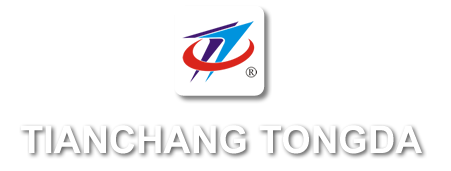Key points of laboratory instrument and equipment management
2022-09-09 09:34:00
The instruments and equipment in the laboratory are directly used to provide test results or assist in testing, and are important assets and testing tools of the laboratory. The accuracy and reliability of the detection results play a crucial role. How to maintain the effectiveness and reliability of instruments and equipment, and keep them in good condition, is particularly important in the process of product quality testing. This article summarizes the following points on how to effectively manage product quality inspection instruments and equipment:
1、 Establish instrument and equipment archives.
1. The competent department should pay attention to the establishment of the filing scope for product quality inspection instruments and materials, and assign a dedicated person to be responsible for establishing a management ledger for product quality inspection instruments.
(1) Detailed registration of instrument name, model, manufacturer name, factory number, measurement range (range), accuracy (resolution), purchase date, purchase status, purchase cost, management number, department of use, operator, purpose, status (in use/out of use), metrological verification period, metrological verification unit/department, last metrological verification date, verification result, previous metrological verification records (date and result), level (valuable, major, general), archive number, etc.
(2) Instrument manual and software, etc.
(3) Instrument upgrade and renovation records.
(4) Instrument maintenance records.
(5) Other materials generated during the use of instruments and equipment.
2. Pay attention to the classification management of product quality inspection instruments. Due to the diversity of instrument varieties, different models, different purchase dates, calibration cycles, and maintenance dates, instruments and equipment can be classified into large, medium, and small instruments. They can also be classified and managed according to their value, and classified into inspection instruments and auxiliary inspection instruments based on their purpose.
2、 Traceability of measurement values of inspection instruments and equipment.
When the product quality inspection instrument is used for a certain period of time, in order to ensure the accuracy and traceability of the measurement values of the product quality inspection instrument, it is necessary to organize various departments in a planned manner to measure the traceability of each testing parameter and evaluate the uncertainty value of the product quality inspection instrument and testing items, or conduct periodic verification and calibration. All instruments and equipment that fall within the scope of mandatory verification should be verified by designated verification/calibration personnel. Only after passing the verification/calibration can experimental use be carried out. After passing the verification/calibration, it is only a basic measure to ensure that it is in a qualified state within the corresponding period of validity. Due to the drift of the inspection instrument and equipment itself or the influence of the environment, the instrument and equipment change with continuous use or time. Therefore, periodic verification can be used as an important means to verify the credibility of the instrument and equipment status. Through periodic verification, once deviations are found, timely maintenance and repair measures can be taken to ensure the timeliness of the inspection cycle and the accuracy of product quality.
3、 Daily use and maintenance of instruments and equipment.
Establish a comprehensive procedure for the use, maintenance, and repair of instruments and equipment. Laboratory personnel must follow the requirements of the quality manual, operate the instruments and equipment with a certificate, operate in a standardized manner, and carefully fill out usage records; Determine the management of instrument and equipment status identification; Strengthen the maintenance and repair of instruments and equipment, register damages in a timely manner, report repairs and have repair records, so as to avoid major accidents during the operation of the instruments and equipment. Regular maintenance and upkeep should be carried out to ensure that the instruments and equipment are in good working condition.
The daily maintenance of instruments and equipment is a common means to ensure the stability and reliability of their measurement values. Especially for large instruments and equipment, attention should be paid to dust, moisture, mold, and sun protection. Effective measures should be taken to ensure that the instrument is not damaged by external factors. Some instruments and equipment have strict requirements for environmental temperature fluctuations, and it is necessary to regularly check whether the constant temperature equipment is operating properly. Regularly debug the easily worn parts of the instrument and equipment, lubricate the sliding and rotating parts, and inspect and tighten the easily loose parts. Require application software to avoid virus infection. Regularly update and upgrade the software of instruments and equipment to improve their service life.
4、 Strengthen the qualification management of personnel using instruments and equipment. Personnel management involves three aspects:
1. Must have participated in training on the use of testing equipment organized by our unit
2. A comprehensive and detailed understanding of all aspects involved in operating equipment, including its working principle, operating procedures, technical performance, etc
3. Knowledge and skills in equipment maintenance and repair should also be understood. Qualified refers to the operator obtaining a calibration qualification certificate and possessing certain operational qualifications. Only with the approval of institutional leaders can they truly be on duty and qualified to operate key testing equipment.
In short, instrument and equipment management is an important part of the quality system of quality inspection institutions. It is a highly comprehensive and meticulous work. Only by conscientiously carrying out every task in the management of product quality inspection instruments and equipment can we effectively grasp the normal operation of the actual instruments and equipment.
previous_page:
Fully automatic high-strength bolt detector
next_page:
Testing method for thickness of steel structure fireproof coating brush





















